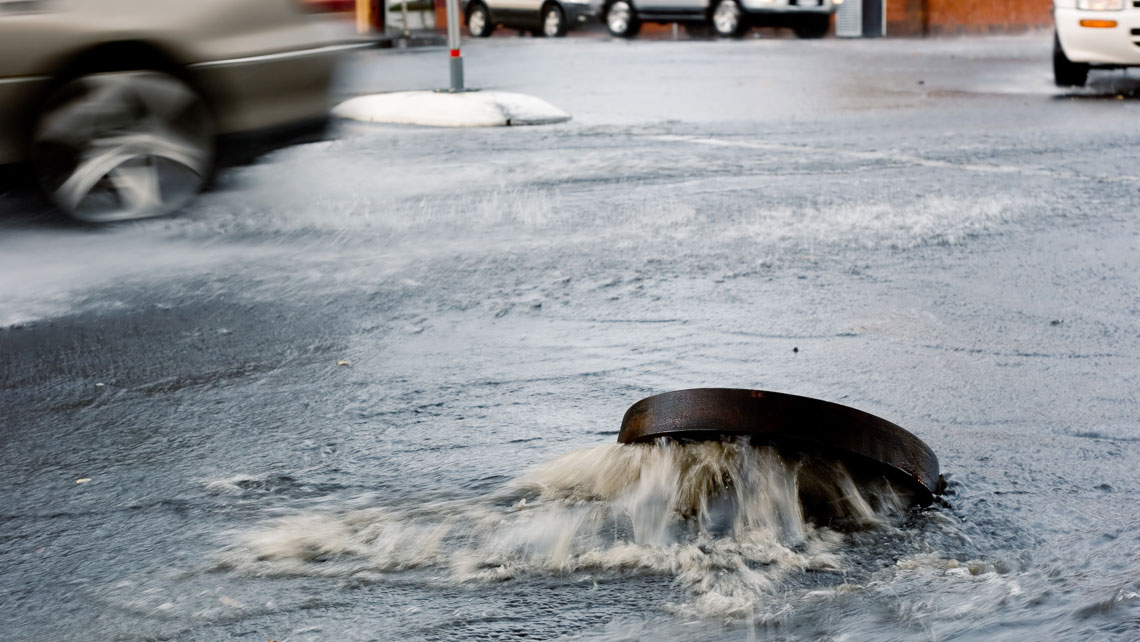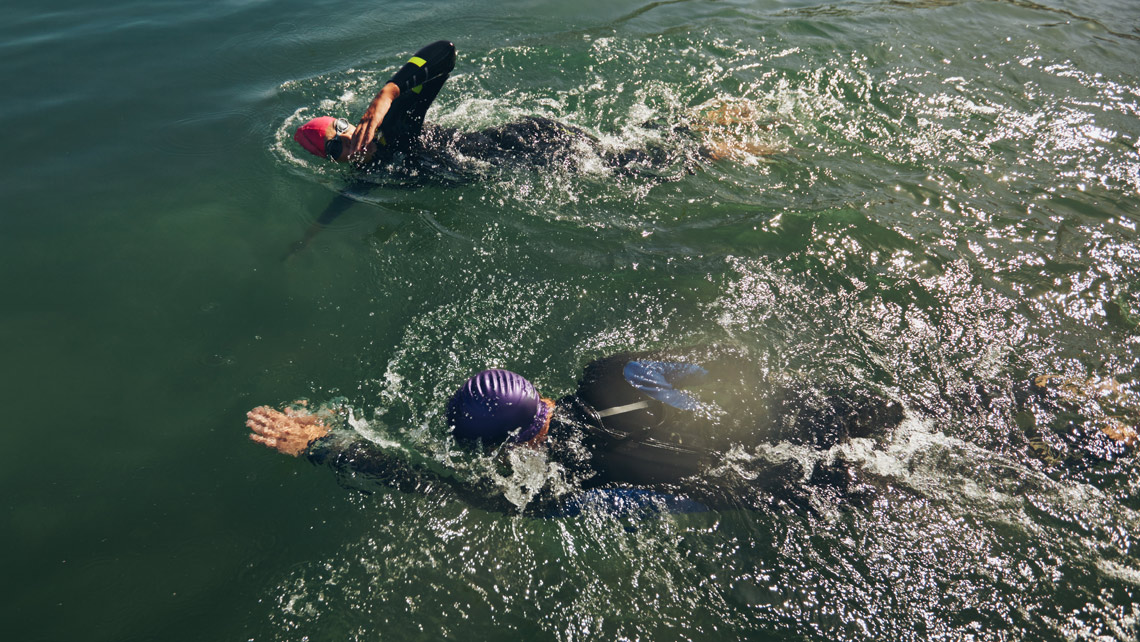Extreme weather events attributed to climate change are now an unavoidable part of the everyday lives of millions of people around the world. News reports of violent rainstorms, gale-force winds, and flash flooding are an almost daily occurrence. In the fall of 2024, a huge part of Central Europe suffered exceptionally heavy rainfall that broke national records in many countries, causing flooding that led to loss of life and damage running into billions of euros.
One of the most serious consequences of these kinds of events is combined sewer overflow (CSO) in sewer systems that carry wastewater and rainwater in the same sewers. When the amount of rainfall exceeds the design capacity of the system it overflows into local surface water. Left untreated, these discharges can cause massive damage to the receiving surface waters because they can contain raw sewage, agricultural run-off, and viruses, among other undesirable contaminants.
“CSOs can have vast and far-reaching consequences in both environmental and economic terms,” says Henrik Rasmus Andersen, Professor of Water Technology Innovation at the Technical University of Denmark. “Beyond the negative impacts on aquatic flora and fauna, such as eutrophication, the surface water can be polluted with nitrogen, phosphorus, and other chemicals that can have a negative environmental impact. On top of that, there is the very real risk of serious disease outbreaks from viruses, or bacteria like E. coli for example.”
Combined sewer overflows can have far-reaching consequences for the environment and local economies.
From an economic and social perspective, CSOs harm local communities by limiting or completely preventing the use of local water bodies for recreational use, and this has a knock-on effect on local businesses in the tourism and food and beverage sectors. “In Copenhagen, where the harbor was opened up for recreational use in 2002, the economic losses from closures due to CSOs led to the building of retention basins to limit the frequency of these events,” says Andersen. Yet, with extreme rain events becoming more common, this was not sufficient to tackle the problem fully.
As Andersen points out, it is impossible for legislators and regulators to ban municipalities from having CSO events. This is because it would be impractical to fully design sewer systems for extreme rainfall. What regulators can do is demand improvements in sewer systems and scrutinize designs to ensure that systems are optimally equipped to cope when they do occur. “There is strong political pressure to improve bathing water quality, plus pressure from the media to do the same,” Andersen points out. “The EU Blue Flag scheme makes it very noticeable when an area loses its blue flag, which helps to ensure that waters are kept to a high standard, especially in politically sensitive times like election periods.”
Physical and chemical methods join forces in the battle against CSOs
The first step towards tackling smaller CSOs is to add some sort of underwater tank into which the water can flow during the event. Once the worst has passed, the water is then drained back into the sewer system so it can be treated. For slightly larger CSOs we can build designed overflow structures, with part of the overflow being fed to runoff areas, usually green spaces such as a park or football field, away from bathing waters or houses. The water can then be recovered later and treated.
“The next approach is technical treatment with chemicals to disinfect the water and remove particles using coagulants and flocculants,” says Andersen. Chemical disinfection of water is Andersen’s specialist area, and he has published research alongside, amongst others, Ravi Kumar Chhetri, Senior Researcher from the Department of Environmental and Resource Engineering, and Kemira’s own Jesper Berner, Senior Sales Manager for Advanced Water Treatment.
Their paper, Chemical disinfection of combined sewer overflow waters using performic acid or peracetic acids, investigates the use of two different chemicals to disinfect CSOs: performic acid and peracetic acid.
The research examined the effectiveness of these chemicals against E. coli and Enterococcus bacteria in pilot and pre-field experiments.
“The biggest challenge with stormwater overflows is that they happen infrequently, so you can’t invest too heavily in physical retention structures ‘just in case’,” says Chhetri. “Stormwater flows fast and the composition changes very quickly too, making it unique in terms of water treatment challenges. Optimizing chemical treatment is very difficult with these flows.”
The research demonstrated that both peracetic acid and performic acid were effective against the bacteria, although peracetic acid required a much longer contact time compared to performic acid. In addition, peracetic acid showed a slight toxic effect on CSO, while performic acid showed no such effect.
“The results suggest that peracetic acid is better suited to CSO treatment when overflows occur through physical structures that enable a long retention time in the order of several hours. Performic acid, on the other hand, is very effective at low doses with a short contact time of around 20 minutes,” explains Chhetri. “Considering flooding happens unpredictably and often in places that don’t have retention structures, this makes performic acid more practical for CSO situations.”
Peracetic acid and performic acid are effective against E. coli and Enterococcus bacteria, but peracetic acid requires a much longer contact time compared to performic acid.
For chemical disinfection to be viable in real-world situations it requires a chemical with high toxicity to bacteria and low toxicity to aquatic life. “Performic acid is truly the only chemical that offers both these advantages,” says Berner. “It is very effective against bacteria and pathogens and degrades very quickly in treated water. The residuals are biodegradable, and any short-term toxicity around the overflow can be managed effectively.”
Berner goes on to explain that a big advantage of this kind of treatment is that the systems and equipment needed to apply it can easily be integrated into existing water treatment infrastructure instead of requiring large capital expenditure. “This gives chemical disinfection an edge over methods like UV disinfection, for example, which can be expensive to build and maintain, and which still requires some form of filtration before the UV step itself.”
Chlorine-free automated disinfection is already a reality
Kemira KemConnect DEX is a proven solution for the chemical disinfection of all kinds of water – from raw water to industrial and municipal wastewater to stormwater overflows. Its secret ingredient is performic acid, which is manufactured on-site in a specially designed unit supplied by Kemira. The unit simply requires an electrical supply, a water supply to flush the system, and sufficient contact time for effective disinfection. Kemira provides comprehensive application support along with chemicals delivery, dosing equipment supply and installation, and control and monitoring tools.
“KemConnect DEX was used to treat wastewater from one of Europe’s biggest treatment plants in Paris during the Olympics, for example,” says Berner. “It also helps to secure the summer bathing seasons in popular tourist destinations like Biarritz or Étretat, France.”
With KemConnect DEX the performic acid can be dosed at exactly the point where water is known to overflow, giving the chemical the maximum contact time with the water.
With KemConnect DEX the performic acid can be dosed at exactly the point where water is known to overflow, giving the chemical maximum contact time with the water. The exact concentration of chemical being dosed can be verified and any residual disinfectant quantified using a specially developed assay.
Immediate measurable benefits for critical overflows
“Performic acid disinfection is an ideal solution for anywhere where there is a large population of recreational water users and where CSOs can have very damaging effects on both local ecosystems and the economy,” highlights Andersen. “These systems are low investment, low maintenance and, critically, non-toxic. This puts them in pole position when it comes to working with regulators to develop the new treatment systems that will help cities to tackle the increasingly frequent and severe weather events caused by climate change.”




